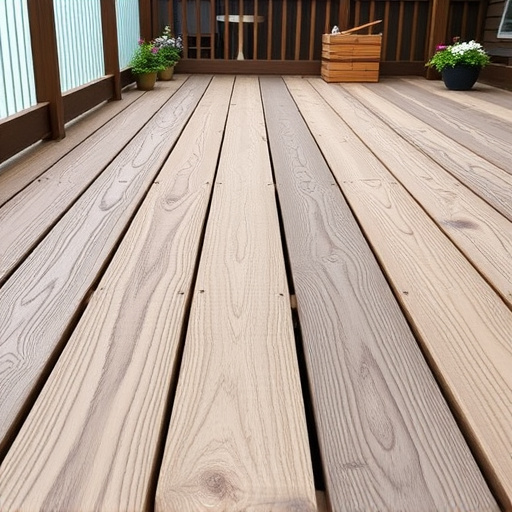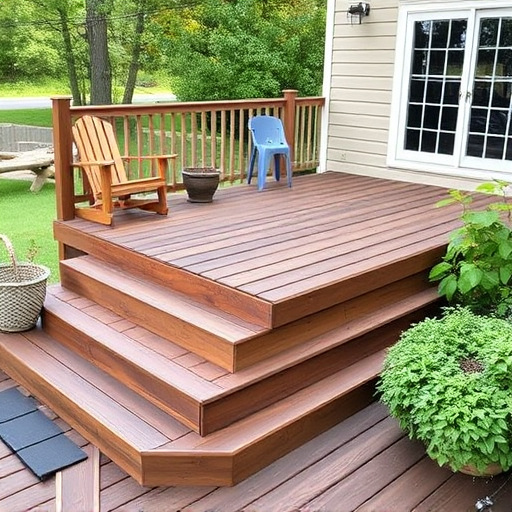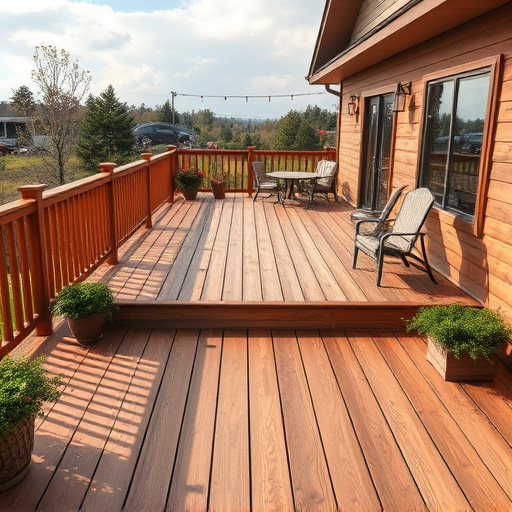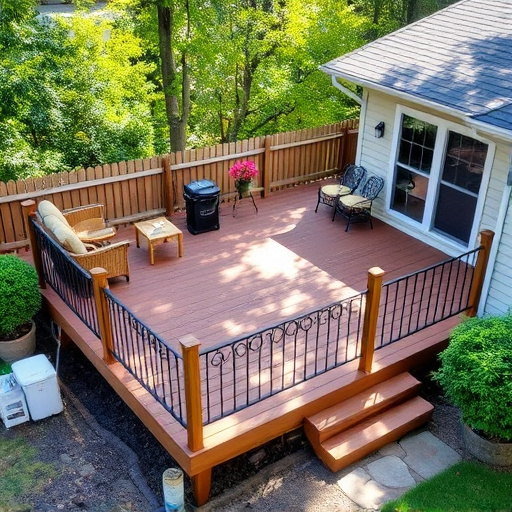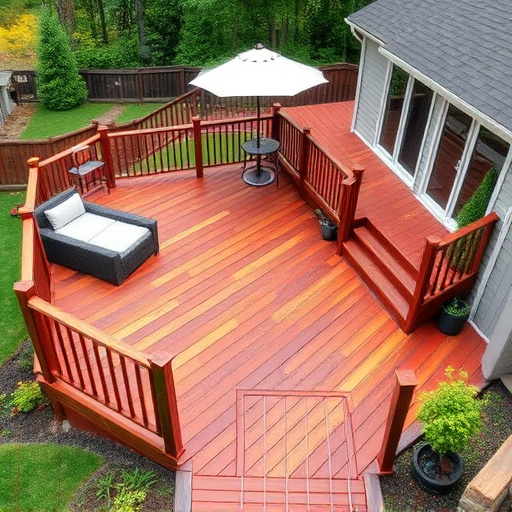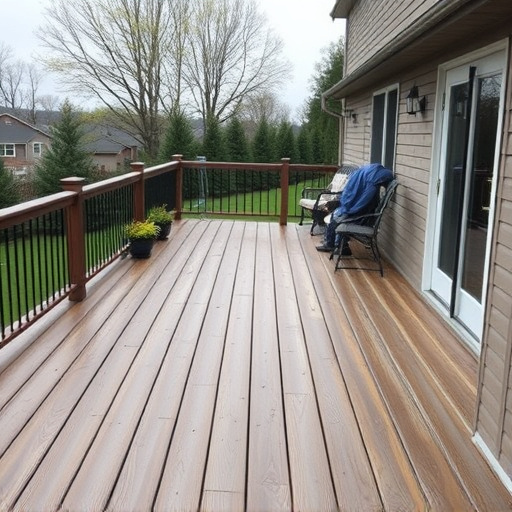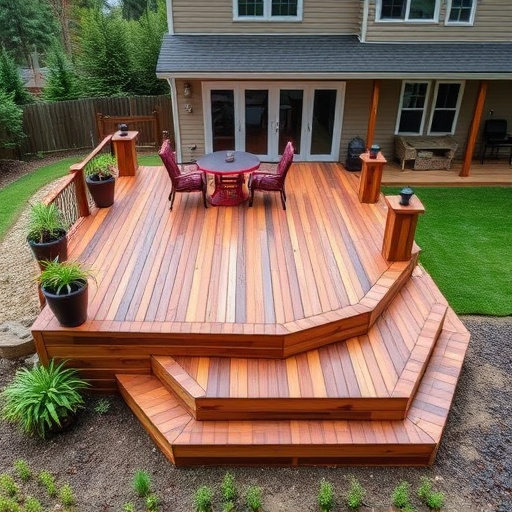Wooden decks, known for their natural beauty and design flexibility, offer an attractive initial cost compared to alternative deck systems. However, they require regular cleaning, staining, and sealing to prevent rot, pest damage, and weather-related issues, especially from termites. Despite the maintenance, wooden decks enhance property aesthetics and can last decades, making them a popular choice for homeowners who value personalization. When deciding between wood and composite deck systems, consider the balance between initial cost and long-term upkeep; composites offer low maintenance but higher installation costs, potentially saving on extensive repairs over time.
Choosing between wood and composite deck systems is a significant decision that influences both your outdoor living experience and financial investment. Wood decks offer natural beauty and durability, but they demand regular maintenance and carry environmental concerns. Composite deck systems, on the other hand, boast low maintenance, long-lasting materials, and diverse design options. However, initial installation costs can be higher. This article guides you through understanding these deck types, their pros and cons, and crucial factors to consider, helping you make an informed choice tailored to your needs and budget.
- Understanding Wood Decks: Pros and Cons
- – Natural beauty and durability of wood
- – Maintenance requirements and cost implications
Understanding Wood Decks: Pros and Cons
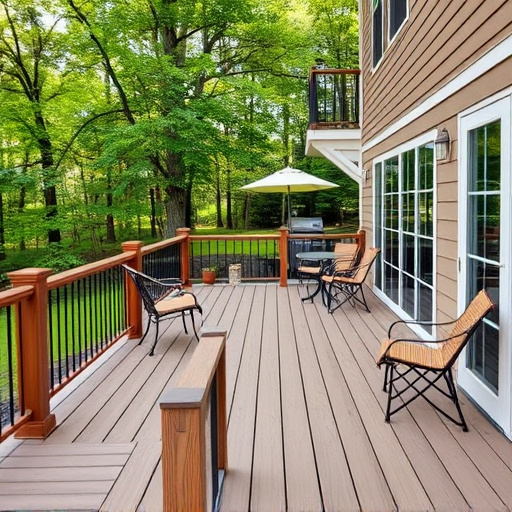
Wood decks have been a classic choice for outdoor living spaces for centuries, offering a natural appeal that many homeowners adore. The beauty of wood lies in its versatility and ability to create unique designs, catering to various aesthetic preferences. However, it’s essential to be aware of both the advantages and disadvantages when considering this option.
One significant pro is the low initial cost compared to composite or other deck materials. Wood is readily available and often easier to install for DIY enthusiasts. Regular cleaning and maintenance, typically involving staining or sealing, can prolong its lifespan. Yet, wood decks require more upkeep than their composite counterparts; they are susceptible to rot, pests, and weather damage, necessitating periodic repairs and replacement of damaged boards. Termite infestations, in particular, can be a costly concern. Unlike siding and gutters, which provide some level of protection against the elements, wooden decks demand continuous attention to maintain their structural integrity and aesthetic appeal.
– Natural beauty and durability of wood
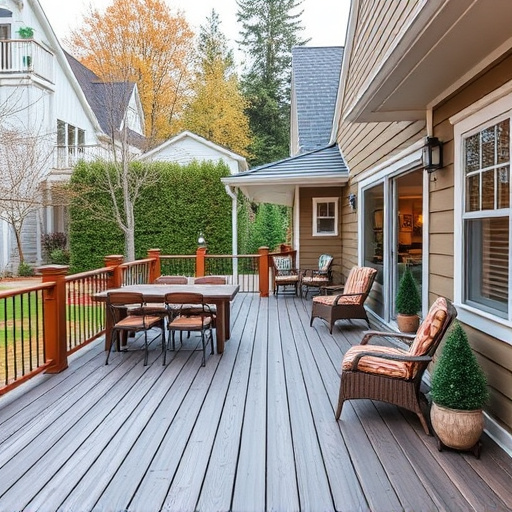
Wood decks have long been celebrated for their natural beauty and durability. The warm tones and graining patterns of wood add a touch of elegance to any outdoor space, enhancing the overall aesthetic appeal of your property. Beyond its visual advantages, wood is also highly durable, capable of withstanding various weather conditions and environmental factors. Properly treated and maintained, wooden deck systems can last for decades, making them a popular choice among homeowners looking for both style and longevity.
Compared to composite materials, wood offers a more organic and customizable experience. From choosing the perfect species that aligns with your climate to refining finishes and stains, wood allows for endless possibilities in design and personalization. This level of customization means you can create a deck that perfectly suits your unique taste and lifestyle. While composite decks have their benefits, particularly in low-maintenance requirements, those who appreciate the timeless look and feel of wood will find it hard to resist the allure of natural deck systems.
– Maintenance requirements and cost implications
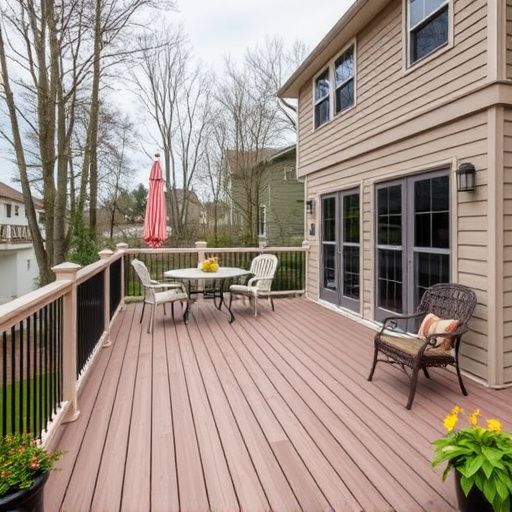
When deciding between wood and composite deck systems, maintenance requirements and cost implications are crucial factors to consider. While wood decks offer a natural aesthetic and classic charm, they demand regular upkeep. This includes annual sealing, staining, and potential siding repairs to combat rot and insect damage. The long-term costs can add up, as frequent maintenance is essential to preserve the deck’s integrity.
Composite deck systems, on the other hand, boast low-maintenance features that appeal to busy homeowners. They are resistant to rot, fading, and cracking, reducing the need for extensive repairs like those often required with wood. However, initial installation costs can be higher due to the advanced materials used. Yet, over time, composite decks offer significant savings on siding repairs and roof replacement, making them a worthwhile investment for many property owners.
When deciding between wood and composite deck systems, it’s clear that each has its unique advantages. Wood offers natural beauty and durability, but requires regular maintenance and can be costly to upkeep. Composite decks, on the other hand, are low-maintenance and offer a variety of styles, making them a suitable choice for those seeking convenience and long-term savings. Ultimately, the best option depends on your personal preferences, budget, and how much time you’re willing to invest in deck maintenance.








